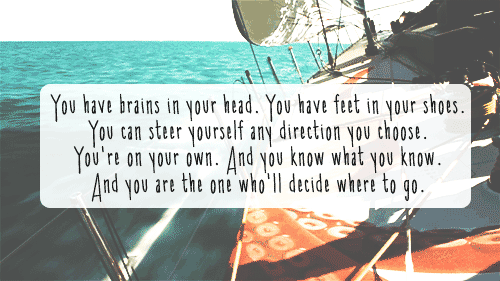
Many Quotes From Children’s Books Every Adult Should Know
pl
plu

I wrote this story for you, but when I began it I had not realized that girls grow quicker than books. As a result you are already too old for fairy tales, and by the time it is printed and bound you will be older still. But some day you will be old enough to start reading fairy tales again. You can then take it down from some upper shelf, dust it, and tell me what you think of it. I shall probably be too deaf to hear, and too old to understand a word you say, but I shall still be your affectionate Godfather, C. S. Lewis.”
She did not shut it properly because she knew that it is very silly to shut oneself into a wardrobe, even if it is not a magic one.”

In about ten minutes she reached it and found it was a lamp-post. As she stood looking at it, wondering why there was a lamp-post in the middle of a wood and wondering what to do next, she heard a pitter patter of feet coming toward her. And as soon after that a very strange person stepped out from among the trees into the light of the lamp-post.
He was only a little taller than Lucy herself and he carried over his hand an umbrella, white with snow. From the waist upward he was like a man, but his legs were shaped like a goat's (the hair on them was glossy black) and instead of feet had goat's hoofs. He also had a tail, but Lucy did not notice this at first because it was neatly caught up over the arm that held the umbrella so as to keep it from trailing in the snow. He had red woollen muffler round his neck and his skin was rather reddish too. He had a strange, but pleasant little face, with a short pointed beard and curly hair, and out of the hair there stuck two horns, one on each side of his forehead.
…
…
"Goodness gracious me!" exclaimed the Faun. (Chapter 1)
Lucy, one of the protagonists of the tale, climbs into a wardrobe only to find that it leads into an amazing forest. The Faun is the first (and definitely not the last) strange character she encounters in the forest.
In real life, it's unlikely that we'll open a wardrobe only to find a magical forest and a half-man, half-goat waiting for us. But this is children's literature, and that means anything's possible. The fantastic appearance of the Faun in this passage is a perfect example of the way in which extraordinary things happen all the time in kids' lit.
The wardrobe itself is a great metaphor for the way in which children's literature moves between the real and the magical. On one side of the wardrobe, Lucy's in the real world: the world of regular people and houses and streets. But once she's in the wardrobe, she's in a whole new world: one in which the rules of reality are constantly being bent.
It is only a pity that Mr Dahl didn't get to finish this book until the last passage of his life and was able to read it to his younger children, and as he mentioned, they grow up quicker than it takes to finish a book! Sometimes this is true. He would be so pleased to know how well his book was received and how many millions of children and parents love reading this timeless tale over and over.
Roald Dahl
One of the all time greatest children's writers.

“He turned and reached behind him for the chocolate bar, then he turned back again and handed it to Charlie. Charlie grabbed it and quickly tore off the wrapper and took an enormous bite. Then he took another…and another…and oh, the joy of being able to cram large pieces of something sweet and solid into one's mouth! The sheer blissful joy of being able to fill one's mouth with rich solid food!
'You look like you wanted that one, sonny,' the shopkeeper said pleasantly.
Charlie nodded, his mouth bulging with chocolate.”
Let us look at many more picture quotes to get you inspired and magically set back on your way.


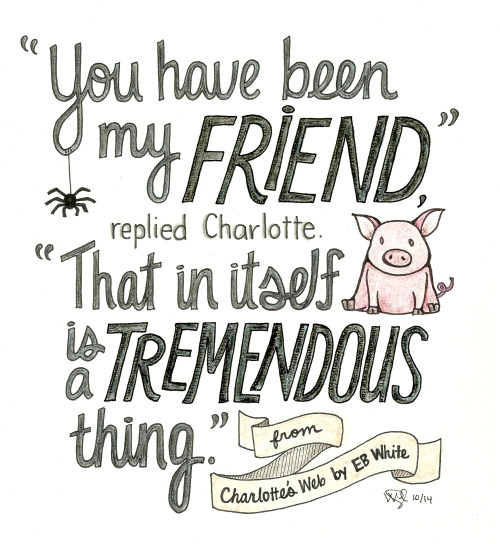
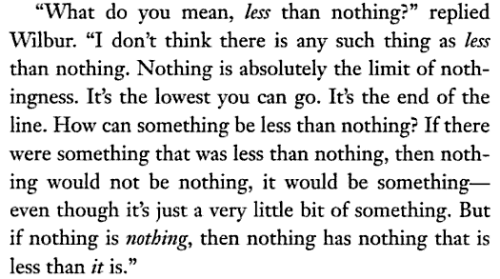

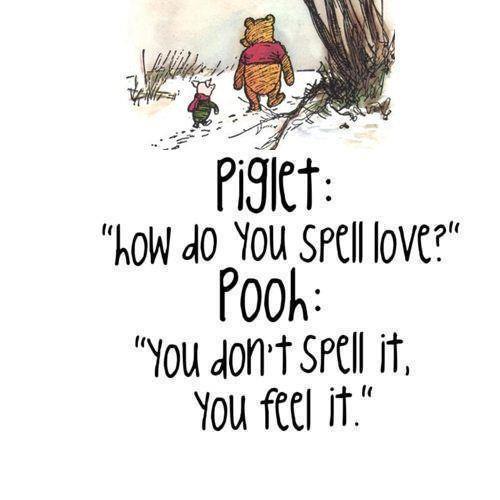

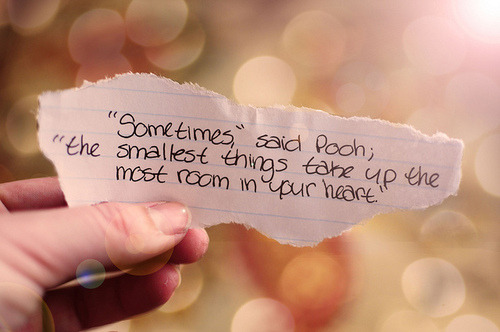
No two persons ever read the same book.
–Edmund Wilson

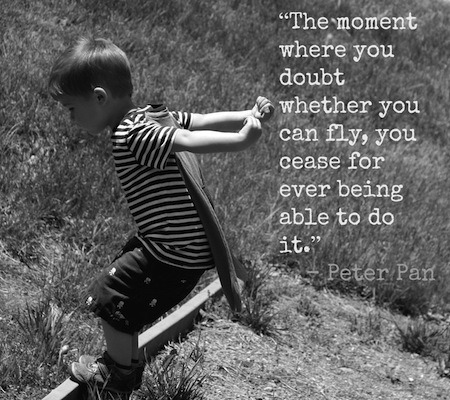




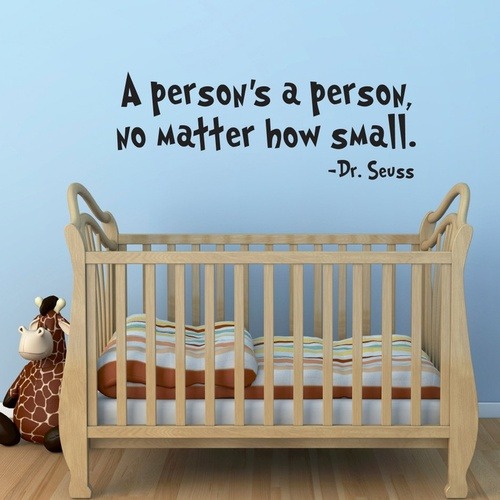





A book is a dream that you hold in your hand.
–Neil Gaiman
Whenever you read a good book, somewhere in the world a door opens to allow in more light.
–Vera Nazarian
If we encounter a man of rare intellect, we should ask him what books he reads.
–Ralph Waldo Emerson
There comes a time when you have to choose between turning the page and closing the book. –Josh Jameson
There comes a time when you have to choose between turning the page and closing the book.
 –Josh Jameson
–Josh JamesonI would never read a book if it were possible for me to talk half an hour with the man who wrote it.
–Woodrow Wilson
Always read something that will make you look good if you die in the middle of it. –P.J. O'Rourke
Always read something that will make you look good if you die in the middle of it.
–P.J. O’Rourke




Anyone who says they have only one life to live must not know how to read a book.
–Author Unknown

More Quotes about books and reading
I think of life as a good book. The further you get into it, the more it begins to make sense. –Harold Kushner
I think of life as a good book. The further you get into it, the more it begins to make sense.
–Harold Kushner
If you only read the books that everyone else is reading, you can only think what everyone else is thinking.
–Haruki Murakami
There are many little ways to enlarge your child’s world. Love of books is the best of all. – Jacqueline Kennedy Onassis
There are many little ways to enlarge your child’s world. Love of books is the best of all.
–Jacqueline Kennedy Onassis
Any book that helps a child to form a habit of reading, to make reading one of his deep and continuing needs, is good for him.
–Maya Angelou
The book you don’t read won’t help. –Jim Rohn #book #quote
The book you don’t read won’t help.
–Jim Rohn
Great books help you understand, and they help you feel understood.
–John Green

A good novel tells us the truth about its hero; but a bad novel tells us the truth about its author. –G.K. Chesterton
A good novel tells us the truth about its hero; but a bad novel tells us the truth about its author.
–Gilbert K. Chesterton
There is a great deal of difference between an eager man who wants to read a book and the tired man who wants a book to read.
–Gilbert K. Chesterton
A book is a version of the world. If you do not like it, ignore it or offer your own version in return.
–Salman Rushdie
In a good book the best is between the lines. –Swedish Proverb #quote #book
In a good book the best is between the lines.
–Swedish Proverb
Are we not like two volumes of one book?
–Marceline Desbordes-Valmore
Keep reading books, but remember that a book is only a book, and you should learn to think for yourself.
–Maxim Gorky
It is what you read when you don’t have to that determines what you will be when you can’t help it. –Oscar Wilde
It is what you read when you don’t have to that determines what you will be when you can’t help it.
–Oscar Wilde

There are perhaps no days of our childhood we lived so fully as those we spent with a favorite book.
–Marcel Proust
The books that the world calls immoral are books that show the world its own shame.
–Oscar Wilde
Beware of the person of one book. –Thomas Aquinas
Beware of the person of one book.
–Thomas Aquinas
A book is the only place in which you can examine a fragile thought without breaking it.
–Edward P. Morgan
If one cannot enjoy reading a book over and over again, there is no use in reading it at all.
–Oscar Wilde
The only important thing in a book is the meaning that it has for you.
–W. Somerset Maugham
The only important thing in a book is the meaning that it has for you.
–W. Somerset Maugham
Read the best books first, or you may not have a chance to read them at all.
–Henry David Thoreau
Reading a book is like re-writing it for yourself. – Angela Carter #book #quote
Reading a book is like re-writing it for yourself.
–Angela Carter


There’s nothing wrong with reading a book you love over and over.
–Gail Carson Levine

It is a good rule after reading a new book, never to allow yourself another new one till you have read an old one in between.
–C.S. Lewis
Make it a rule never to give a child a book you would not read yourself. –George Bernard Shaw
Make it a rule never to give a child a book you would not read yourself.
–George Bernard Shaw
Books serve to show a man that those original thoughts of his aren’t very new after all.
–Abraham Lincoln
I can’t imagine a man really enjoying a book and reading it only once.
–C.S. Lewis
![Reading © Sasha SALMINA (Artist. Russia) via www.Behance.Net/Faino A child who reads will be an adult who things - anon. [Do not remove. Caption required by international copyright law. Link directly to the artist's website.] COPYRIGHT LAW: http://pinterest.com/pin/86975836525792650/ PINTEREST on COPYRIGHT: http://pinterest.com/pin/86975836526856889/ The Golden Rule: http://www.pinterest.com/pin/86975836527744374/ Food for Thought: http://www.pinterest.com/pin/86975836527810134/: Reading © Sasha SALMINA (Artist. Russia) via www.Behance.Net/Faino A child who reads will be an adult who things - anon. [Do not remove. Caption required by international copyright law. Link directly to the artist's website.] COPYRIGHT LAW: http://pinterest.com/pin/86975836525792650/ PINTEREST on COPYRIGHT: http://pinterest.com/pin/86975836526856889/ The Golden Rule: http://www.pinterest.com/pin/86975836527744374/ Food for Thought: http://www.pinterest.com/pin/86975836527810134/](https://s-media-cache-ak0.pinimg.com/736x/59/ef/99/59ef9939604b27c9267d5124d973a28b.jpg)
Where is human nature so weak as in the bookstore? –Henry Ward Beecher #quote
Where is human nature so weak as in the bookstore?
–Henry Ward Beecher
A great book should leave you with many experiences, and slightly exhausted at the end. You live several lives while reading.
–William Styron
One always has a better book in one’s mind than one can manage to get onto paper.
–Michael Cunningham
I divide all readers into two classes; those who read to remember and those who read to forget. –William Lyon Phelps
I divide all readers into two classes; those who read to remember and those who read to forget.
–William Lyon Phelps
In old days books were written by men of letters and read by the public. Nowadays books are written by the public and read by nobody.
–Oscar Wilde

There are worse crimes than burning books. One of them is not reading them.
–Joseph Brodsky
What you don’t know would make a great book. –Sydney Smith #book #quote
What you don’t know would make a great book.
–Sydney Smith
You know you’ve read a good book when you turn the last page and feel a little as if you have lost a friend.
–Paul Sweeney
I cannot sleep unless I am surrounded by books. –Jorge Luis Borges
I cannot sleep unless I am surrounded by books.
–Jorge Luis Borges
Some books leave us free and some books make us free.
–Ralph Waldo Emerson
Men do not understand books until they have a certain amount of life, or at any rate no man understands a deep book, until he has seen and lived at least part of its contents.
–Ezra Pound
That is a good book which is opened with expectation and closed with profit. –Amos Bronson Alcott #book #quote
That is a good book which is opened with expectation and closed with profit.
–Amos Bronson Alcott
Once you learn to read, you will be forever free.
–Frederick Douglas
Books are like mirrors: if a fool looks in, you cannot expect a genius to look out.
–J.K. Rowling
A book is a device to ignite the imagination. –Alan Bennett #book #quote
A book is a device to ignite the imagination.
–Alan Bennett

It’s not just the books under fire now that worry me. It is the books that will never be written. The books that will never be read.
–Judy Blume
If there is a book that you want to read, but it hasn’t been written yet, you must be the one to write it.
–Toni Morrison
A good book has no ending. –R.D. Cumming
A good book has no ending.
–R.D. Cumming
Every sentence and every book is a miracle and a miracle takes time. Never give up, carry on writing, carry on reading!
If you loved all of these quotes please like our pages at the top of this blog and you can also find us here KidLiterature
https://twitter.com/KidLiterature
https://www.facebook.com/KidLiterature
This blog was brought to you by Karen Emma Hall for Kid Literature

































